Archive
Training Out-of-Doors…
If you’re lucky enough to be living here in Beautiful BC- you know as well as I do that the gods of ‘good training weather’ are about to awaken from their deep, rain-soaked slumber.
There are a-great many places to train here in Vic when the dojo is unavailable or…when you just want to train outside. Personally, I recommend training outside whenever you can…I feel it is one of the more beneficial ways to train the martial arts. The uneven ground trains stabilizing muscles, the fresh air gives you more energy, and yep…no clock on the wall. Here are some things to keep in mind when training outside…
Pick a good spot for your dojo. Consider a spot that has a fair amount of seclusion…you’ll want to Kiai strong and not disturb nearby residents. You may not feel comfortable at first with onlookers so if you must train in an area with them, bring a training partner for support. Pick an area that has an active sport schedule like a soccer or softball pitch. The people around are more likely to be used to shouting/outdoor activities and training.
The ‘trample factor’ will need to be considered as Karate training will take it’s toll on any type of organic ground and the last thing you want is to ‘ruin’ the area for others. Consider what to wear. I recommend wearing black gi pants with your white gi top and belt or at the least…the black gi pants w/old long sleeved shirt. If you decide not to wear your Karate Gi, you may find you have more of a ‘casual’ attitude towards the training and, in some cases, require more focus.
Shoes or no shoes? If you decide to go without shoes you will want to incorporate a grounds inspection into your start-up/warm-up routine and complete a thorough scan of the training area for undesirable debris. If you prefer to train in shoes, I’d recommend getting a snug-fitting pair of Kung-Fu Shoes with an outdoor sole from china town or Kata Trading – but, of course, bare-foot training on dirt is one ofmy favourite things to do!
I hope you learn to enjoy outdoor training as much as I do…Some of the most memorable classes I’ve had were outside under a HUGE oak tree I called “Grandfather” (most of the students who trained under that particular tree just called him “Gary”), but every time I pass by that particular spot…I always think back to the mornings of sweat and grass-stains – some classes that went 3-hours ’cause we lost track of time-some classes which had kids mimicking us in the nearby field……maybe it’s time I pay Grandfather a visit.
Sensei Mitch.
…More Wisdom from Sensei St. Hilaire
Sensei St. Hilaire shares yet another essay to those lucky enough to spy them on the internets…
I have many notes on what I feel the purpose behind dojo etiquette is but, I have not organized them just yet…I’ll get them on here soon enough!
So here you go again…another chunk of thought-provoking chocolate for your Budo – Hungry brains…
——-
What is so damn important about dojo etiquette? Why do I have to bow? I don’t bow to anyone! What is the difference if I act a certain way or not, am quiet or not, am respectful or not? Does it mean I can’t defend myself? If I don’t bow lower than my senior – does that mean I won’t be able to kick his ass anyway? And, why do we have ranks anyway. If I can tap out a blue belt, why aren’t I a blue belt.
These are common types of questions in the West. The American mind has been brought up in a society that challenges authority, has been told anyone can be great or famous, and balks at the concept of discipline. We have a society that believes everyone is equal, and “I’m OK, You’re OK”. Basically we live in an “I don’t have to do it if I don’t want to do it” society. We relegate important issues which require action and decision to gray areas. We don’t like Black and White, Right and Wrong. We feel more comfortable with “politically correct” and “socially acceptable”. We discuss issues with our children instead of instructing our children. We’d rather be buddies than leaders. At the same time, many live under the delusion that they possess leadership qualities. This is what leads to the statements made in the first paragraph – which I have heard over and over again in various dojo settings. So why should we practice a certain etiquette in the dojo, and what are those etiquettes? I can answer the first question in one word; Samurai.
Samurai is an adverb that has become a noun. The word Samurai means “to serve”. It has the same connotation as those who “serve” in today’s military. They take up a higher cause, recognize superior authority, and act selflessly in defense of our nation. The Samurai did the same for his feudal lord. Among all those who “Serve”, whether the military, law enforcement, fire prevention, or other volunteer services, there is a common code of behavior.
This code of behavior is built from necessity. One must conduct oneself in a certain manner to remain part of the group; in order to “serve” an authority; in order to interact with each other; and in order to interact with the higher authority, and those who are enemies of said authority. With the Samurai, that code was called Bushido, or the Way of the Warrior. These codes of conduct – or etiquette pass along with the warrior methods themselves. There are clear reasons for this. Warrior methods are methods of war, killing, and defense. Knowledge of such dangerous means demand serious controls on the conduct of those who possess such knowledge.
There is a second level of etiquette having to do with warrior groups. These are actions necessary to gain entrance, maintain acceptance, establish place, and gain respect within the warrior group. This is common among all warrior groups, whether those of the Samurai, the martial art dojo or the military.First is recognition that you are attempting to gain entrance into a special closed group of very dangerous individuals. These individuals have spent years working hard to maintain their place in this group, and have gone through enormous amounts of pain and hardship in order to stay in this group. From all this work, they have gained nothing more than camaraderie, silent recognition, and self-confidence. Some groups give medals or trophies. But at the same time, these warriors realize these tokens are meaningless. It is only in battle that what they have learned matters. Their survival is their only meaningful trophy.
The next step is to maintain your newly earned acceptance. Even when you are in the group – you are not part of the group for a long time. You have to prove yourself. You have to show the appropriate respect, acknowledge the skill and knowledge of seniors, and train very, very hard. When you have done that for a long time, you will achieve a place in that group. It will not be a senior place – but you will be part of the clan. Worth spending time with, worth protecting in battle, an asset more than a liability. It is at this point that acting in the correct manner is most important. A breach reflects upon the seniors and their lack of leadership. Their seniors will come down very hard on them. Very hard. With years of hard work and perfect conduct – you may gain respect in the warrior group.
There are traditional etiquettes that have existed in the Japanese martial arts for hundreds of years. Each came from the necessity to maintain safety, hierarchy, battlefield competence, a good training structure, and proper attitude toward seniors. This last one is of utmost importance, because it was the seniors who made life and death decisions for the group in battle. In the dojo, these seniors still make life and death decisions. They know when you are about to do something dangerous to yourself or others. They know how to get you out of trouble. They have years of experience. Listening and following their commands (ok, we’ll call them suggestions) can make or break a real self-defense situation.
Here are the basic etiquettes that should be followed, accepted, and embraced.
1. There are seniors and there are juniors. There are no equals in the Dojo.
2 . If there was no sensei, there would be no group, he or she is the glue that holds the group together and sets the general tone. He or she sets the training schedule. He or she has gone through all the hardships the student has gone through or will go through. Thus, all etiquettes focus on the sensei, and their sensei (s)
3 . The dojo is the “way-place”. This is the room or the building or the spot where the knowledge is passed from one generation to the next. This place will always be special. It is a place where life changes take place. Thus the place itself deserves reverence.
THUS… Remove your shoes outside the dojo. You will spend alot of time on the mats, often with your face being ground into it. You do not want to have the bacteria, dirt , etc. that your shoes have stepped in during the day, to now be on the mat, and thus on you.Bow to the Kamiza and Sensei (if he is in the dojo when you enter). With this bow, say Onegashimasu (pronounced Oh-nay-gah-shee-mahs). This roughly means “please teach me”. This instantly establishes your place in the group. You have acknowledged your instructor and his ability to teach you something you did not know. You acknowledge those who spent their lives teaching your instructor. Thus you acklowledge the warrior spirit that has passed through the generations to you.
Clean the dojo. Before class starts, it is the students responsibility to make sure their training hall is dust free. Dust the walls, the pictures, the charts, etc. Then dust the mats. Again the practical purpose is to remove dust you may be breathing, and any dirt or dust from the mats before you work on them. Why does the student have to do this and not the owner of the dojo? Service. You are serving. You are serving the dojo, ensuring its long life. You are serving your fellow students, giving them a clean environment. Again, you are establishing your place in the group. If someone more senior than you is already cleaning – insist on taking over the cleaning from them. They have spent months or years cleaning, and establishing their place – now the junior must also do so. Only when you show care for your dojo and concern for others in the group, will you be accepted.
Be sure your training uniform is clean before every class. Hygiene in a place where sweatly bodies are in constant contact is of utmost importance. Viral, bacterial and fungal diseases are easily spread. Be sure your belt is tied tightly and correctly. Seniors look for attention to detail. When you show a lack of attention to detail, seniors will think you will also ignore detail in technique. That could cause injury in class, or death of yourself or your dojo mate in battle.
Bowing during class follows this methodology. Sensei will lead opening bows to the kamiza and instructors. Student bows should be slightly longer than those they bow toward. Bowing is a sign of respect. Everyone wants to receive respect. The fastest route to receiving respect is to give respect with conviction.
After sensei gives instruction, a short bow is necessary. This thanks him/her for the instruction, and also signals clear understanding of his training directions. One then bows to their partner. This acknowledges ones acceptance that you and your partner are about to engage in a dangerous activity. Each knows the other could mistakenly hurt them. Each knows the other could hurt them on purpose. Thus a symbol of mutual respect is necessary to set the correct tone in training. When you are finished working with a partner, you should bow as a sign of respectful thanks that your partner did not injure you.During training, one must suspect that they are under constant surveillance. Which, of course, they are. Sensei and/or Sempai are always watching. Watching your progression, technically and mentally. Watching your attitude and etiquette. They are looking for any flaw that tells them you should not be a trusted or respected member of their group. Remember this. I have personally, and more than once said to myself “I am not teaching that technique to that person, because they lack the mental control to use it safely.” You are under scrutiny. Even more so in a dojo that is run by a traditional Sensei who is not concerned with making a certain amount of money, or running a business. He picks and chooses who trains and who does not train. Student population is not of importance. Training hard and with precision and conviction shows the seniors and Sensei you are an asset to the warrior group. Laziness, and sloppy training tells them you are a liability. Someday their own life could be in your hands. They keep that in mind always. And that tells them who should stay and who should go.
The most difficult part of dojo etiquette is letting go of the ego. It is hard, when you may be a doctor, or a police chief, or a captain in the army, to come to a dojo and relinquish control. It is hard to accept other authority – when in other parts of your life you are the authority. Even if you do not hold a high place in society or a certain social group, it is difficult to accept that you are now under the authority of 1000 years of warriorship. Your sensei is a vessel of this authority. And you must accept this. With training, and work, and understanding, and skill, you too may someday be a sensei. This, of course, never releases you from the On (debt) you owe your instructor, and does not ever make you equal. Your students will be in the same boat.
Being The Sempai…
I found this essay whilst looking for the reason why we use “SEMPAI”, the romanized spelling of SENPAI, which is the Japanese spelling of the title in our dojo. Sensei St. Hilaire’s essay popped-up in my search as “SENSEI8SEMPAI” and as I read it…the words ripped into my mind, propelling my thought in a way that only a Sempai or *sigh* former Sempai could possibly begin to understand…What hit me the hardest though…was the realization that while looking for little things like – proper spelling of Karate Terms – one can easily miss that which one must strive find in everything concerning Karatedo…
-Being The Sempai- By Sensei St. Hilaire, December, 2003
What does it mean to be a Sempai. The simple meaning is to understand the definition. Sempai translates as “Senior” and can be applied in any situation where someone is senior to you. The Japanese term is used in school, business, the arts, and of course the martial ways. But the meaning for those in a traditionally run martial art group is far deeper than simply “Senior.” The history of Sempai is long. The position has existed in warrior groups since warrior groups began, and is not just a Japanese phenomenon. Originally Sempai was the most senior warrior in the group, under the group’s commander or leader. His responsibility has always been awesome and harder than anyone elses in the group. He was responsible for the development and direction of the lower warriors, and for the protection of the leader. No other position in a warrior group had these responsibilities. In the Japanese martial arts, the position remains the same.
The Sempai of a dojo had trained for a long time with the headmaster. He understood the headmasters (Sensei’s) goals, training methodologies and philosophies. He also understood Sensei as a warrior and as a person. More than these understandings, he had privileges and knowledge about Sensei that other students did not. Thus this made Sensei vulnerable to Sempai. With that vulnerability came trust by Sensei and responsibility by Sempai. With these privileges and knowledge about Sensei, Sempai had the sole responsibility to protect Sensei with his life. This often meant that Sempai was forced to train harder than both the students and the Sensei, for if a student or enemy saw that Sempai was vulnerable or easily beatable – there was surely an opening to get at Sensei. In times of war, Sempai was either the strongest or the weakest link in the command chain. A Sempai who was not the strongest was quickly replaced out of necessity.
Being Sempai meant you were personally responsible for the training of Kohai (juniors). Upon review by Sensei, all Kohai must measure up to Sensei’s standards or Sempai was directly to blame. Sempai was personally responsible for Kohai ettiquette. This was most important. Any breaches in ettiquette in the dojo were repremanded by Sempai, not Sensei. If Sensei had to make the correction, it simply meant Sempai was not doing his job. If either of these situations happened more than a few times, Sempai was replaced with someone who could accomplish the duties assigned. Being Sempai also meant you were the only person in the dojo that Sensei completely recognized for his martial skill. He is the one person who Sensei “feared” in the group. Most often Sempai was the fiercest and smartest person in the warrior group besides Sensei. The difference is that it was Sensei’s position to lead in a calm, controlled and sophisticated manner, whereas Sempai maintained control through toughness, fierceness, and a no-nonsense attitude.
It was and IS Sempai’s responsibility to immediately correct any breach in ettiquette toward Sensei, stop any threat toward Sensei, correct technical insufficiencies of the Kohai, and dominate in training. Those who could not fulfill these responsibilities were removed. With all this responsibility, Sempai is still the best “job” in the dojo. You are the dominant warrior. You maintain the relationship between Sensei and students. You get the special training with Sensei. You set and maintain the attitude in the dojo. Traditionally you are the one who commands the students. When you see Sensei ready to start class you tell the students to line up. You tell the students to Bow to Sensei. You smack them on the back of the head when they are fooling around instead of training. You save the new student from abuse by more experienced students. You are solely responsible for resetting the tone of a group of students if it is going in the wrong direction.
At the same time – you are the person most looked up to in the dojo. You are recognized as the person nobody wants to mess with. You are the one the students watch when you contest with Sensei – because they know you are the one most likely to catch Sensei when he makes a technical mistake. There are others in the dojo referred to as Sempai – and it means Senior. That is a blackbelt, a member of the Yudansha – one who is senior to the mudansha (those below blackbelt). But being THE Sempai is something different. THE Sempai sits in front of the blackbelt sempai at an angle both to Sensei and the blackbelts. This position is necessary because the Sempai needs to see both Sensei and Students. His back can be turned to neither if he is to protect Sensei. Being THE Sempai means you train directly with Sensei and Sensei confers with you on strategy, technique, and running the training sessions at the dojo.
The Sempai should make every effort to be at Sensei’s dojo as often as possible. (In warrior history it was always – but today’s modern society – not at war – often means making it to class as often as practical.)
The Sempai should always be concerned that some other student is receiving more training than him, is training harder than him, and is perhaps taking over his position without him knowing it. Sempai constantly looks at students with distrust – being the barrier between the students and Sensei.
The Sempai should not rush toward being a Sensei in his own dojo. Because all of these duties, which a correctly chosen Sempai’s personality is natural for, will go away. In order to be Sensei you must re-invent yourself and become something else. When that day comes – a true Sempai will look back on his days as The Sempai as the “glory days”, which he will sorely long for the rest of his days. This is what it means to be the Sempai.
Kihon, Kata & Kumite…
Kihon waza
Kihon waza are basic techniques, including methods of standing and moving (tachi waza), punching (tsuki waza), striking (uchi waza), kicking (geri waza), defense (uke waza), joint attacks (kansetsu waza), and throwing and falling (nage waza, ukemi waza). Like all complex motor skills, karatedo techniques are learned through careful coaching and constant repetition. The goal is to be able to execute any technique spontaneously, with correct form, speed, and power.*
Correct kihon waza are essential to the effective use of karatedo for self-defense. Proper body mechanics, breathing, and focus can enable even small people to strike with disabling force. But this is the result of hard work. If performed incorrectly, karate techniques can be more dangerous to the person doing them than to an assailant. Karate training involves constant, repetitive practice of kihon waza, both individually and with partners.*
Kata
Kata are the essence of karatedo. These sequences of rearranged attacks and defenses have sometimes been compared to dance because of their dynamic grace. Yet it may be more accurate to describe kata as “textbooks” of karatedo. Many kata are known to be almost 200 years old, and some are probably older. They date from the period of Okinawan history when karate training was conducted in secret, without written records. To transmit their knowledge of combat techniques, the old masters created kata encoding the skills, knowledge, and mental states necessary for effective application of karate. Students must learn and practice kata constantly. Achievement of kyu and dan rankings can depend on learning kata and performing them correctly. Bunkai, or interpretations of kata, are drills in which kata movements are analyzed and applied with training partners. This two-person practice creates an understanding of the combative applications of kata. Kata Breakdown can also aid the student with the ‘Feeling’ of the techniques in kata. As with the realization of application within the technique, the intent behind the technique will develop.*
Kumite
Kumite, or sparring, is an essential aspect of karatedo training, providing a kind of laboratory setting in which the functional value of techniques can be tested and refined. Kumite training also develops spirit, humility, and courtesy. Kumite training ranges from simple two-person drills, to interpretation of complex kata movements, to jiyu kumite (free sparring). Ordinarily, protective equipment (Hand/Forearm & Instep/Shin pads) is used. To preserve the realism of techniques without excessive risk of injury, punches, kicks, and strikes are focused short of actual contact. In addition to non-contact (tsundome) kumite, advanced students also practice bogu kumite, contact sparring. In all forms of kumite, mutual respect and safety are mandatory. Kumite training in True Vision does not focus on sport competition, though members can be permitted to compete in tournaments (shiai). Tournament sparring can be an exciting and rewarding experience, but pursued in isolation, it can lead to ineffective techniques and unrealistic attitudes. In traditional karatedo, the purpose of kumite is not to win trophies, but to acquire the skills and maturity needed to survive a real-life crisis. Serious kumite training tends to develop compassion and consciousness of the frailty of living beings. In the dojo, aggression and egotism are not qualities to be encouraged but obstacles to overcome.*
*Borrowed from one of the many sites I’ve surfed dedicated to BUDO and BUSHIDO…
Cut From the Same Cloth…
...excerpt from 24 Fighting Chickens by Rob Redmond–
I have always worn my karate uniform to and from practice sessions in my car, on my bike, or when walking to practice. When I lived in Nagoya, I noticed that the Japanese were never seen in their karate uniforms riding on a subway train or bus. In Japan, one apparently does not wear a karate uniform in an inappropriate place. The Japanese are very sensitive to context, and therefore don’t appreciate the more casual Western approach to clothing in which one might not take time to change clothes before changing locations. Where as in the West, you might see someone in their workout clothes at the gas station or other public place, no Japanese would ever do this. Instead, they make sure that they change into appropriate attire before changing situations. Most people put their karate uniform into a gym bag to take it to the dojo.
While in Japan, I saw people just stuff their karate uniforms into their gym bags without any concern at all. My instructor was a different matter. He never stuffed his karate uniform into his gym bag. He always had his uniform folded carefully and then placed into the bag. Usually, one of the senior club members would fold it for him and put it into his bag. You might also enjoy folding your uniform carefully the way the Japanese do: tied together with your belt. Then you can place it like a neat package into your bag.
Use the Floor – The first step to properly folding a gi is to get on your knees on the floor. Lay the jacket (Top) out with the back down to the floor. Spread the sleeves out so that they point straight out to the sides in opposite directions. Centre the pants (Bottoms) with the jacket ensuring the waist drawstring is placed inwards.
Fold One Side Over – Fold one sleeve and a quarter of the torso of the jacket over toward the other sleeve. As any part of your jacket that was on the floor is folded in, brush it off with your hand to get anything that stuck to it off. Also, this brushing action helps you to crease your uniform neatly.
Fold the Sleeve Back – Fold the sleeve back on itself to get it out of the way.Fold the Other Side – Now fold the other side in and that sleeve back the same way.
Fold the Bottom Up – Fold the end of the pants upwards to even them with the jacket. Make 2 more even folds (depending on the length of your gi) upwards.
Fold the Top Down – Now fold Top down. Ideally there should be a total of 2 folds upwards and one from the top down so your gi is rolled up in folds in three motions.
Tie a Bow – Wrap your belt around the package, and tie it off.
You’re done!
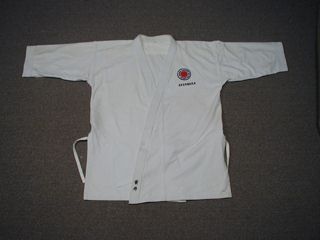
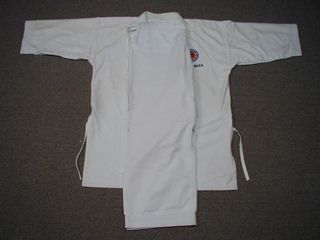
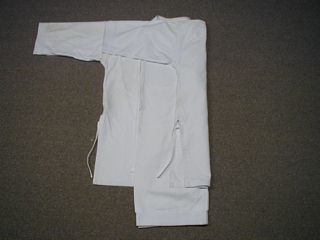
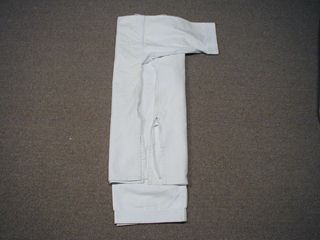
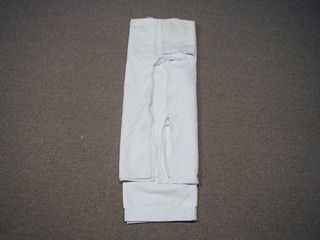
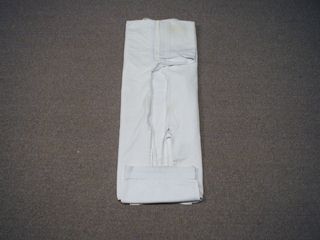
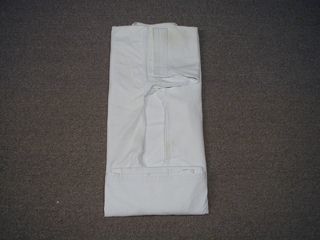
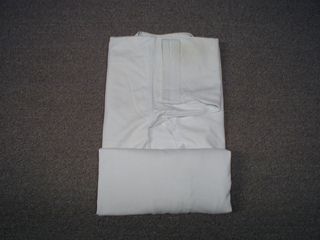
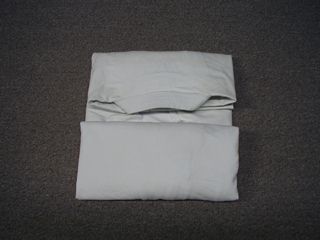
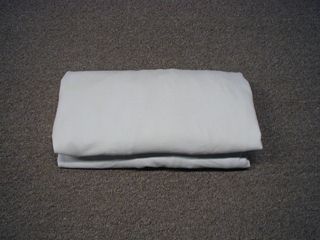
Recent Comments